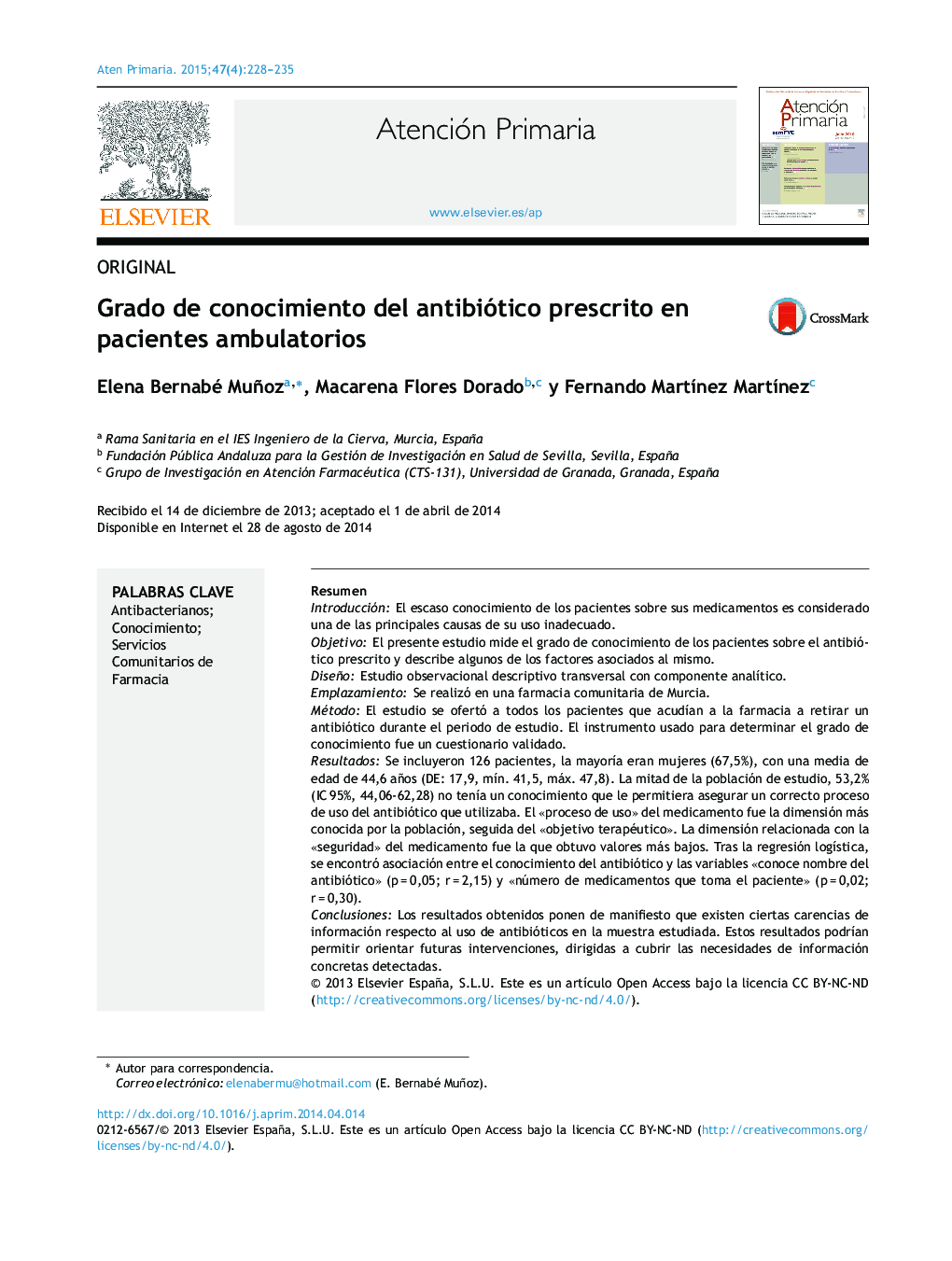| Article ID | Journal | Published Year | Pages | File Type |
|---|---|---|---|---|
| 3457283 | Atención Primaria | 2015 | 8 Pages |
ResumenIntroducciónEl escaso conocimiento de los pacientes sobre sus medicamentos es considerado una de las principales causas de su uso inadecuado.ObjetivoEl presente estudio mide el grado de conocimiento de los pacientes sobre el antibiótico prescrito y describe algunos de los factores asociados al mismo.DiseñoEstudio observacional descriptivo transversal con componente analítico.EmplazamientoSe realizó en una farmacia comunitaria de Murcia.MétodoEl estudio se ofertó a todos los pacientes que acudían a la farmacia a retirar un antibiótico durante el periodo de estudio. El instrumento usado para determinar el grado de conocimiento fue un cuestionario validado.ResultadosSe incluyeron 126 pacientes, la mayoría eran mujeres (67,5%), con una media de edad de 44,6 años (DE: 17,9, mín. 41,5, máx. 47,8). La mitad de la población de estudio, 53,2% (IC 95%, 44,06-62,28) no tenía un conocimiento que le permitiera asegurar un correcto proceso de uso del antibiótico que utilizaba. El «proceso de uso» del medicamento fue la dimensión más conocida por la población, seguida del «objetivo terapéutico». La dimensión relacionada con la «seguridad» del medicamento fue la que obtuvo valores más bajos. Tras la regresión logística, se encontró asociación entre el conocimiento del antibiótico y las variables «conoce nombre del antibiótico» (p = 0,05; r = 2,15) y «número de medicamentos que toma el paciente» (p = 0,02; r = 0,30).ConclusionesLos resultados obtenidos ponen de manifiesto que existen ciertas carencias de información respecto al uso de antibióticos en la muestra estudiada. Estos resultados podrían permitir orientar futuras intervenciones, dirigidas a cubrir las necesidades de información concretas detectadas.
SummaryIntroductionThe lack of patient knowledge about their medication is considered to be one of the main reasons for an inappropriate use.ObjectiveThis study the level of knowledge in patients about their prescribed antibiotic, and describes some of the factors related to this.DesignA cross-sectional, descriptive and observational study with an analytical component.SiteA community pharmacy in Murcia.MethodsThe study form was offered to all customers who arrived to obtain antibiotics while the study was taking place. A validated form was used to determined the level of knowledge was a validated form.ResultsA total of 126 patients, most of them women, with an average age of 44.6 years were included. Half of the study population had no knowledge which could ensure the correct use of the antibiotic they were taking. The «process of use» of the medication was the best known dimension by the study population, followed by the «therapeutic aim». The dimension related to the «safety» of the medication was the one with the lowest values. After a logistic regression, a link between the knowledge of the antibiotic and the «know the name of the antibiotic» (p = .05; r = 2.15) and the «number of antibiotic the patient takes» (p = .02; r = 0.30) variables.ConclusionsThe results show that there is a certain lack of information on the use of antibiotics by the study sample. Thes results could help to show the way to follow in future studies, targeted to meet the need of information.
